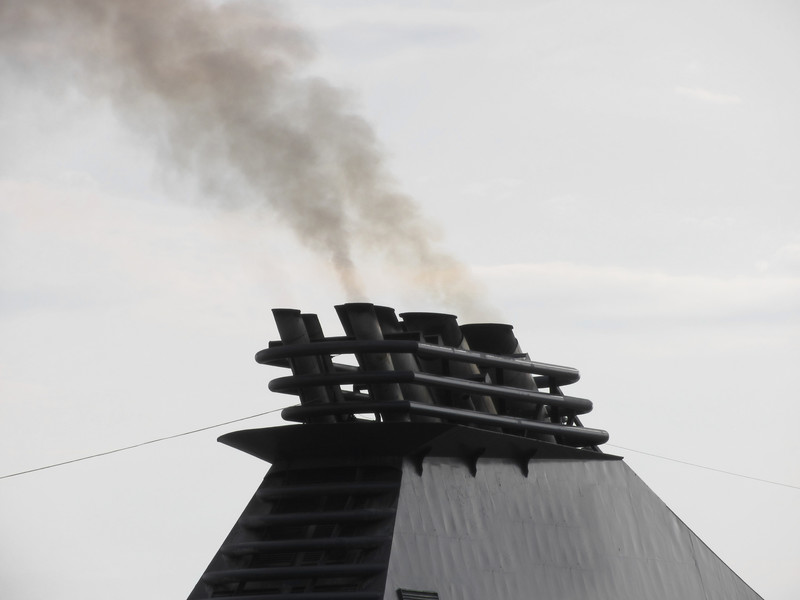The complex financial calculations and logistics relating to the transitional period regarding shipping fuels, with low-sulphur fuel rules coming into play on January 1st 2020 and rules on fuel on board coming in on March 31st is already causing problems for some ship owners, according to a recent Intermodal weekly report.
It said that “with less than two months before the end of the year, the shipping and refining industries have already taken measures and invested to accommodate the IMO 2020 regulations. As the implementation date for the 0.5% sulphur cap approaches, the US EIA expects that the swing in petroleum product pricing will be most acute in 2020 and the effects on prices will be moderate after that. However, the regulations will inevitably affect petroleum supply, demand, and trade flows on a long-term basis while shipowners, operators and charterers around the world are carefully preparing marine fuel supplies ahead”.
The initially anticipated scale of an MGO demand swipe looks unlikely to be as great as expected. VLSFO is challenging MGO as a stand-in for high-sulphur fuel oil.
VLSFO is already available in various locations across Asia, Middle East, Africa and the Americas and will be made available to additional ports during November and December. Demand is beginning to ramp up as January approaches, with the VLSFO being stored offshore in anticipation of possible supply difficulties. But supply capacity continues to increase.
Market disturbance caused by the transition to IMO 2020 has become apparent as the supply side of HSFO has begun running down stocks. Tank barges that have been stowing HSFO are being taken out of service to be cleaned and made ready for VLSFO or MGO.
With an anticipated plummet in prices of HSFO leading up to December 31st, ship owners are playing a juggling game when it comes to cost, trying to walk as fine a line as possible as the changeover approaches.
Therefore Intermodal concluded that the transition to the 0.50% sulphur limit would cause disruption and volatility for a while, but that the market would eventually adapt.
Meanwhile, North’s Loss Prevention Executive Mark Smith interviewed Owen T. Webber of Oilchart for a bunker supplier’s view. He saw the biggest challenge for bunker suppliers as the impact on availability of the different fuels. Other potential issues could be how bunker price increases could impact the credit worthiness of fuel purchasers. He said that Oilchart was working hard to educate buyers about the challenges ahead in the market and the transition.
Oilchart had not yet seen a trend in the mix of contract versus spot purchases, but Webber said that this would be driven by the strategy of the buyers. “Traditionally, our business has been made up of both spot and contract volumes, reliant on the expected flow of fuel oils out of major hubs. The last few months has seen turbulence created in the wholesale market, which in turn has a direct effect on the retail market. The volatility in the market makes it very difficult to forecast price and availability of the different products”.
He said that the needs of buyers were so diverse it was dependent on each individual position and the needs of the vessel.
Recent developments had meant that Oilchart was seeing stockpiling, which reduced storage availability. This meant it now cost more money to store. “Notably, we have seen a recent reduction in availability of high sulphur fuels and owners with vessels fitted with scrubbers might want to arrange contracts with suppliers”.
Webber said that carrying multiple grades was nothing new for the market place. “We have been doing this for many years and have well-proven processes for managing the different types of fuel.”
However, Oilchart expected to see a rise in compatibility and quality issues. The market expectation had grown beyond the standard ISO specifications and meeting those expectations would be a challenge. “As a supplier, we avoid co-mingling of products, we carry out bench blend tests and can also carry out pre-checks on compatibility when samples are at hand.”
https://www.nepia.com/articles/2020-qa-bunker-suppliers-look-over-the-horizon/
This article is kindly supplied by Insurance Marine News. If you would like a complimentary trial to the daily Insurance Marine News e-bulletin please email grant.attwell@insurancemarinenews.com.

